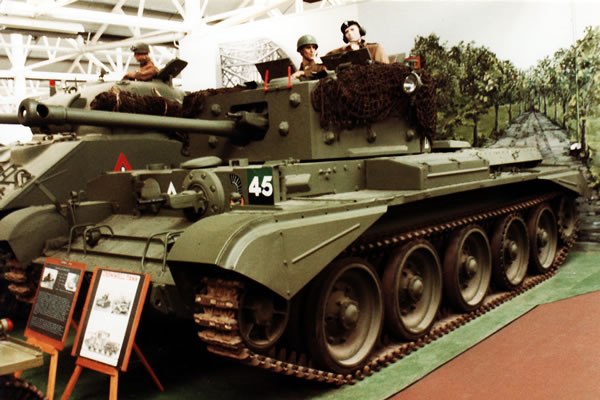The Infantry Tank, Black Prince (A43) was an experimental development of the Churchill tank with a larger, wider hull and a QF 17-pounder (76 mm) gun. This is one of the six prototypes made and is on display at the Tank Museum at Bovington.

As a development from the Churchill, the Black Prince was a continuation of the line of Infantry tanks, that is slower, heavier tanks intended to operate in close support of infantry. It also was able to work closely with other tanks. The parallel development in British tank design were the Cruiser tanks, which were intended for more mobile operations.
By the time the Black Prince prototypes had appeared in May 1945, the Sherman Firefly had proved itself in combat, the Comet tank was in service and the introduction of Centurion was imminent. All these tanks carried the QF 17-pounder or a derivative; all had better mobility than the Black Prince and the Centurion had frontal armour of comparable effectiveness. The Black Prince had become redundant and the project was abandoned
The Black Prince marked the end of the development of the A22F Churchill Mk VII, and the end of the Infantry tank concept in British tank design.
At the Tank Museum wargames show was an alternate history 1946 game which included 15mm Black Prince models.
If Battlefront had ever gone down the road of Late-War Monsters to complement their Mid-War Monsters range, the Black Prince would have been an ideal candidate for a model.






















